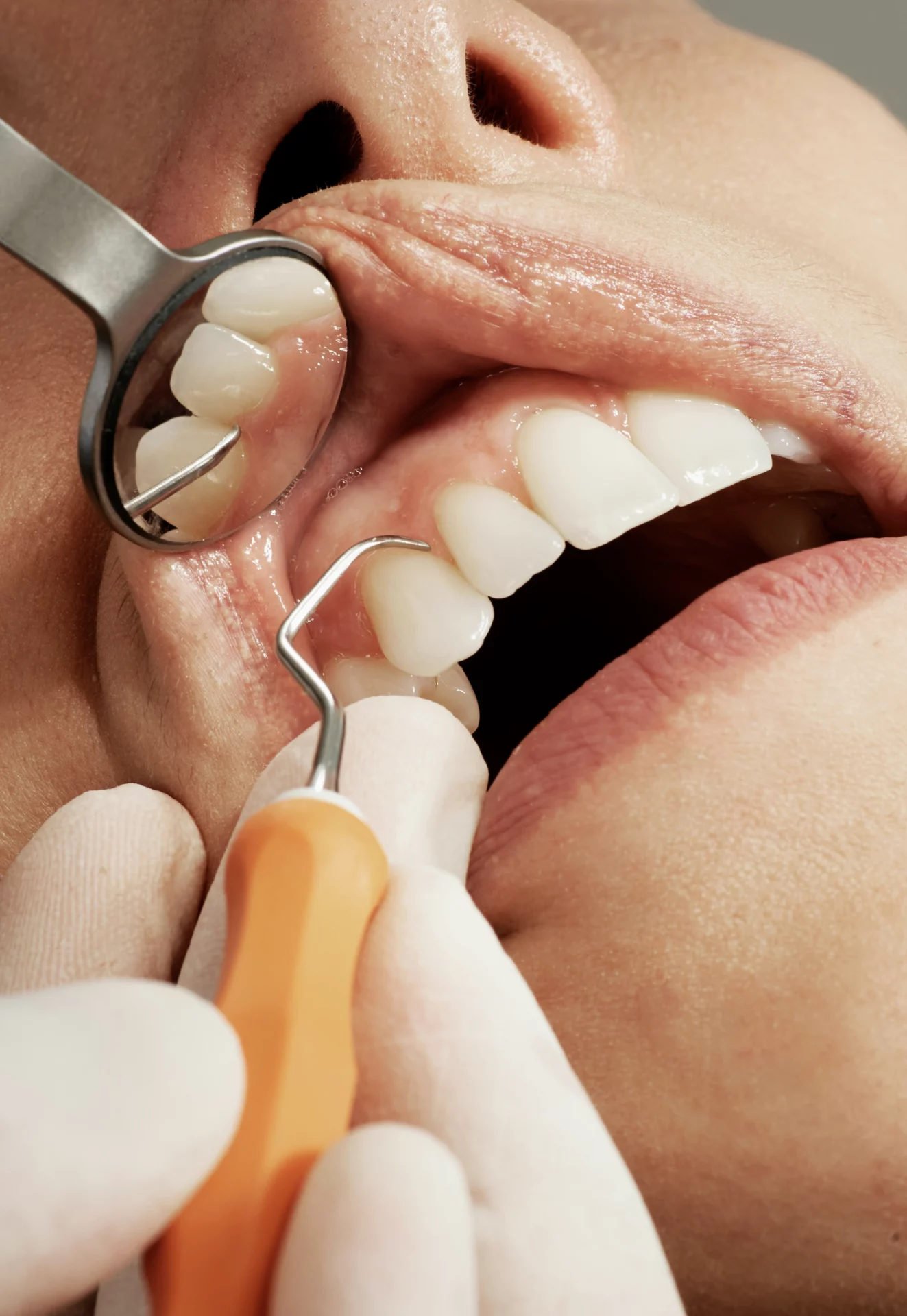Gum infection

Periodontics in Bilbao
Causes and symptoms of gum infection
Gum infection is a very common disease. It affects 95% of the population to a greater or lesser extent at some point in their lives.
It is characterised by frequent bleeding in everyday life, when brushing your teeth, biting into an apple, eating a sandwich or even staining your pillow. People who smoke may not notice any of this because tobacco hides the reality of their gum health, and at the same time, makes them more susceptible or more likely to suffer from this disease. When the infection affects only the gums, it is called gingivitis, but it can progress to periodontitis, in which case the bone that holds the teeth in place is destroyed and the teeth may be lost.
The speed at which the disease progresses varies from person to person, and even within the same person, there may be times when it progresses very quickly for a period, then slows down, and vice versa. That is why it is important to start treatment as soon as possible to prevent the disease from progressing silently.
Causes
The cause comes from the bacteria that all humans harbour between the gum and the tooth, inside the fold that forms between them and which cannot be seen, but which concentrates the highest density of bacteria or microbes of all the orifices in our body.
Symptoms
Los síntomas son el sangrado tanto ocasional como frecuente; el enrojecimiento o amoratamiento de las encías; hinchazón o aumento del tamaño;
recesión, bajada o subida de las encías
; pérdida de la forma de las encías; a veces, dolor a la masticación en parte o en toda la boca; movilidad de los dientes.
Puede avanzar sin dolor, al contrario de la caries dental profunda.
Las personas fumadoras, pueden llegar a la caída de los dientes sin notar nada de esto previamente ya que el tabaco oculta los signos que hacen que se note la infección, pero no los evita, sino que los agrava.
Gum disease
Treatment of gingivitis or gum infection
Over the years, we have specialised in treating gum infections at our dental clinic in Bilbao. Gum disease treatment is highly effective and has two aspects: healing and preventing new infections.
The cure consists of removing, under local anaesthesia, the excess bacteria and microbes found in the fold or groove formed by the gum and the tooth, using a professional treatment called ‘curettage’ due to the use of ‘curettes’ or instruments specially designed to remove bacteria from the groove. Each patient and each of their teeth require different degrees of curettage, which is why it is necessary to first diagnose the extent of periodontal disease or gum infection in each patient.
Prevention consists of avoiding new infections through care that helps patients improve their daily hygiene using the most appropriate hygiene tools for each situation. During professional prevention visits, we monitor the health of the gums once they have healed, providing personalised follow-up. We eliminate bacteria that, despite daily care, organise themselves in the folds or grooves of the gums, forming ‘colonies’ or bacterial biofilms that are highly resistant to destruction and must be broken down or removed to prevent the gums from becoming infected again.


Acute necrotising ulcerative gingivitis
Acute necrotising ulcerative gingivitis (ANUG) is an acute infection of the gums that manifests itself as pain in the gums affecting a large area of the mouth. The onset is sudden, so it is important to be alert to the symptoms.

More information about gum infection treatment
Advanced periodontal treatment involves removing deep bacterial deposits to completely cure the infection. In some patients, regenerative periodontal treatment may be performed.
